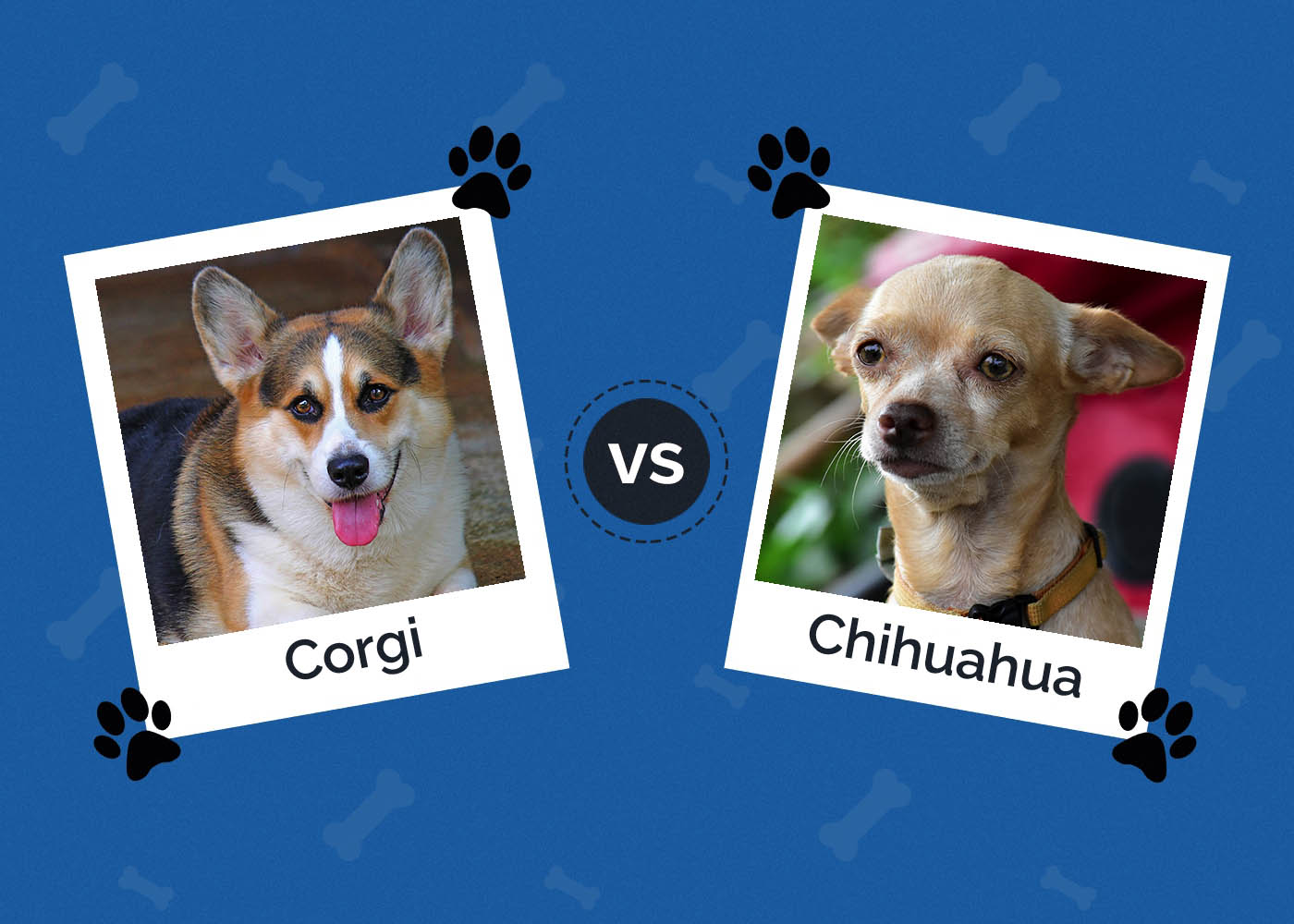Can Dogs Eat Salt? Vet Approved Health & Safety Guide

Updated on
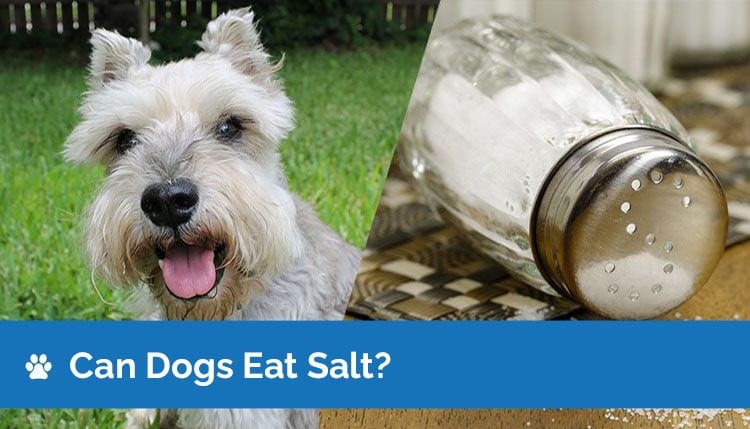
Did you know that salty snacks are one of the more common human foods people give to their dogs? Chips, pretzels, and other delicious items seem to be easy to hand over to our fur babies. Have you ever stopped to think whether salt is good for them, though? When we think of salt, it’s usually with guilty pleasure, as our minds go right to hot and tasty French fries.
Even if you don’t have a mild fry addiction, you probably know that too much salt is not good for you. So, what about our canine friends? Is it good for them? Bad for them? Does it affect them as it does us? The short answer is yes, salt is safe for your dog to eat, but too much salt can be fatal. As a matter of fact, dogs need salt in their diets to survive, but only at the right quantities.
Is Salt Safe for Dogs to Eat?
Sodium plays an essential role in your dog’s fluid levels and balance. For now, you must know that your dog requires salt in their daily diet, but it’s equally important to remember that too much salt can be fatal. This is where a lot of confusion and misinformation comes into play. For example, if you read other similar articles about foods like peanuts, bacon, or beets, you will most likely read something like…
“Make sure the nuts are unsalted!”
When you continually see warnings like this, it can lead you to believe that salt is bad and should be avoided, but that is not the case. Let’s look closer at why dogs need sodium in their diet and how much they should be getting with each meal.

How Much Salt Do Dogs Need?
As we mentioned, canines need salt in their diets to survive and be healthy. Why? Sodium chloride (which is the medical term for salt) is about 40% sodium and 60% chloride. Both of these minerals are electrolytes, which means they carry an electrical charge. When your pup consumes and digests salt, the electrolytes are ionized. This means that they break into cations (positively charged ions) and anions (negatively charged ions). These ions help to regulate different body functions like fluid levels, blood pressure, blood volume, the transmission of nerve impulses, digestive impulses, and much more.
Now, another important note to remember is that there are several different electrolytes that your body needs. Salt, being made of sodium and chloride, makes up two of them. This is important when you are looking at dog food labels as you will want to check for the levels of both salt ingredients.
According to the AAFCO, on average, an adult dog needs a minimum of 0.12% chloride and 0.08% sodium in their food. Unfortunately, checking a bag of dog food for these levels is not as easy as it sounds. First of all, salt can be listed as:
- Sodium chloride: Added to meet nutritional guidelines.
- Sodium tripolyphosphate: Added as a preservative.
- Sodium nitrite: Added to preserve color.

As you can see, not all salt is actually “healthy” in dog food, but that is another story. For now, the salt content of dog foods can be tricky to look at, but there are some guidelines.
Secondly, the guidelines for canine salt consumption can be confusing. The “official” minimum daily requirement is 5 mg/kg of body weight, yet the National Research Council (NRC) increased it to 13.3 mg/kg of body weight to make up for sodium that is not properly absorbed in your dog’s system. This is equal to 0.2 g/1,000 kcal per day.
Checking for these amounts on your dog food label is harder than it sounds. Depending on their formula, the way brands measure the sodium levels can vary. As a reference, the brand should have between 0.5 g/1,000 and 2.5 g/1,000 kcal per day (this is approximately 2–10g/kg of dry matter) in order for it to be within healthy limits.
What Happens When They Don’t Get Enough Salt?
When your pup doesn’t get enough salt in their diet, it affects many functions of their body. Not only that, but it can also cause other serious health concerns. Hyponatremia is the most common condition that goes along with sodium chloride deficiency.

This can occur in your dog if they do not eat enough salt, but it can also happen naturally if they suffer from an imbalance that keeps them from absorbing the sodium into their body. Take a look at the signs and symptoms that your pet may be experiencing this condition:
- Lethargy
- Vomiting
- Less alert
- Seizures
- Loss of appetite
- Disorientation
- Weakness of muscles
If you notice these signs, it’s important to contact your vet or an emergency clinic right away for help. This can be a life-threatening condition that will require professional help to cure.
So, How Much Salt Can Dogs Have?
We know, we didn’t exactly answer this question above. Here’s the skinny: as long as you are feeding your pet nutritious dog food that is produced by a reputable brand, they should not need any additional salt in their diets. What is provided to them through their wet or dry food is adequate to keep them healthy.
One thing to note, however, is that you want to take into account other things your pet may eat, like their treats. Treats can be higher in salt and other ingredients that are not healthy, like sugars. What’s more, canned or wet food is higher in salt than dry. Too much sodium can be just as harmful, if not more, to your pet than too little salt.
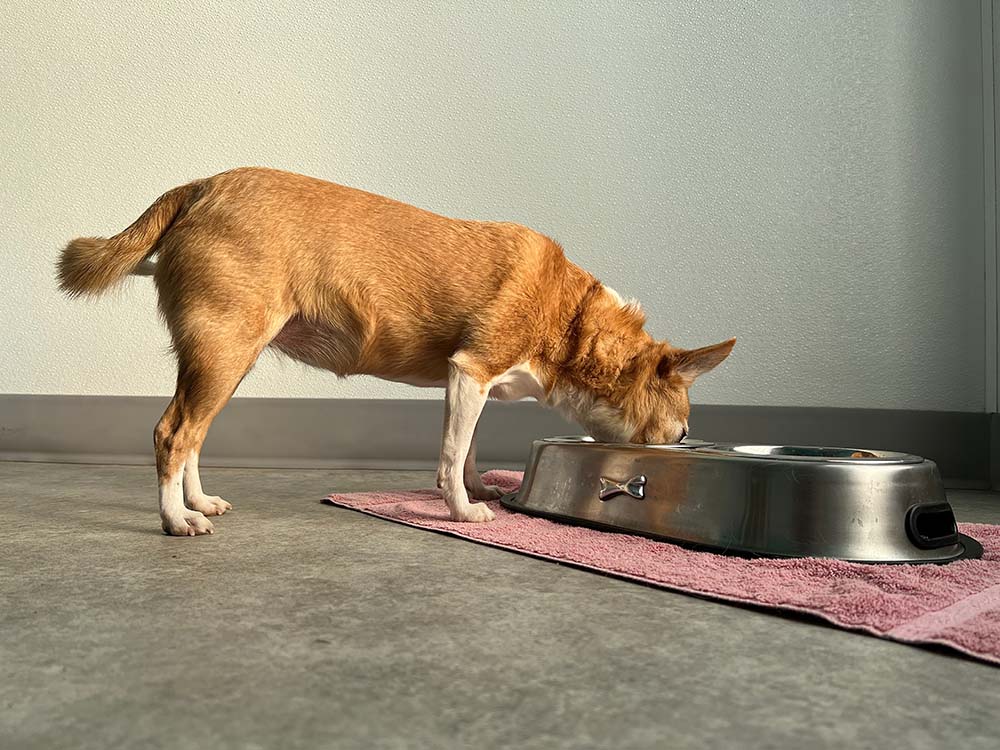
The Health Risks of Too Much Salt
Now that you know how much salt your dog needs, what happens if they don’t get enough, and why they need it, we want to talk about why too much salt is also a bad thing.
In the section above, we mentioned that the maximum level of sodium in your dog’s diet should be approximately 2–10g/kg of food on a dry matter basis.
This is the maximum recommended amount, so they should get food below this level. Natural prey animal species contain between 2.5–10 g/ kg of sodium on a dry matter basis, while processed food such as bacon or table scraps contain between 10–18 g/kg.
One of the most serious issues associated with consuming too much salt is salt poisoning. As we mentioned, your pup is most likely to get all they need from their regular food, and many other foods exceed the recommended limits. You should avoid offering your pup salty treats.
What Is Salt Poisoning?
Salt poisoning occurs when your pet has consumed too much sodium. This happens from eating too much food with salt, drinking ocean water, getting into other things they are not supposed to or consuming improperly mixed electrolyte solutions. There is a higher risk of salt poisoning if the dog does not have access to fresh water. Either way, this is a serious condition that needs to be treated right away. If it is severe enough, it can be fatal.

There are many signs of this illness ranging from mild to severe. Take a look at the symptoms of salt poisoning:
- Vomiting
- Lethargy
- Staggering
- Diarrhea
- Excessive thirst
- Tremors
- Seizures
- Fluid retention
- Frequent urination
- Coma
- Confusion
- Loss of appetite
- Respiratory distress
- Tongue swelling
- Muscle spasms
- Stomach pain
When your pup has had too much salt, they drink water to combat the issue. Like us, salt will make your dog thirsty. It is the body’s natural reaction when there is a spike in this electrolyte. Salt toxicity occurs when your pet doesn’t have access to water, or they have consumed a large amount of sodium.
When either of these scenarios happen, the body takes finding water into its own hands. Regardless of whether they can’t drink any water or there is too much sodium in their system, your dog’s cells will release their own water to balance out the spike. In response, the brain’s cells start to die from dehydration.
What to Do if Your Dog Has Too Much Salt
The first thing you want to do is give your pet water. Next, call your vet, emergency pet clinic, or animal poison control right away. If the toxicity has gone too far, they will need medical attention to get better or it can be fatal. A veterinarian is the only way to know how severe the problem has become.
Typically, your vet will do an overall check of your pooch while getting information from you such as their age, diet, health, and what caused the salt overdose. They will control the seizures, administer an IV for fluids, and provide oxygen. The salt level cannot be brought down too quickly, either. If it does, it can cause a heart attack or brain swelling.
In most cases, your pet will be administered to the hospital and kept for a minimum of 24 hours for observation. After that, you can bring them home with instructions on getting them back on their feet.
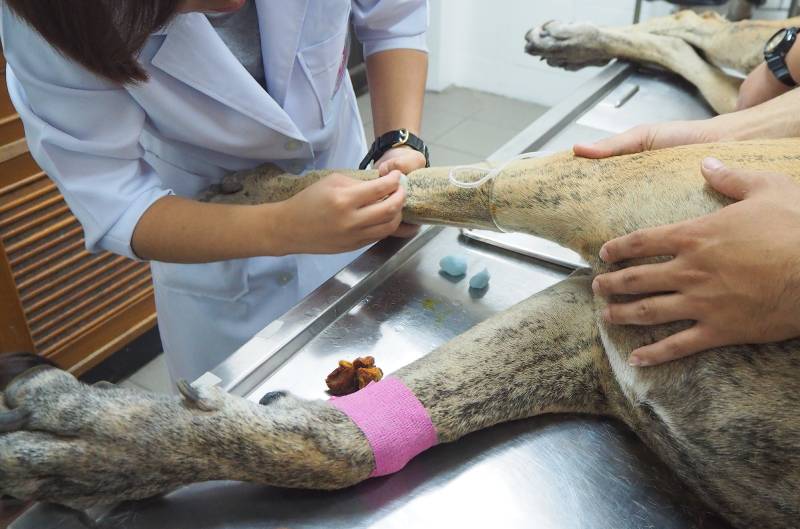
How to Avoid Salt Poisoning
The best way to avoid this happening to your dog is by monitoring their ocean swims, not giving them salty table scraps, and providing them with plenty of water at all times. Unfortunately, though, there are many other ways your pup can have a salt-attack that you should note. For example, you want to keep them away from household products they could eat, such as:
- Rock salt
- Playdough
- Saline solution
- Paintballs
- Salt shakers
- Soy sauce
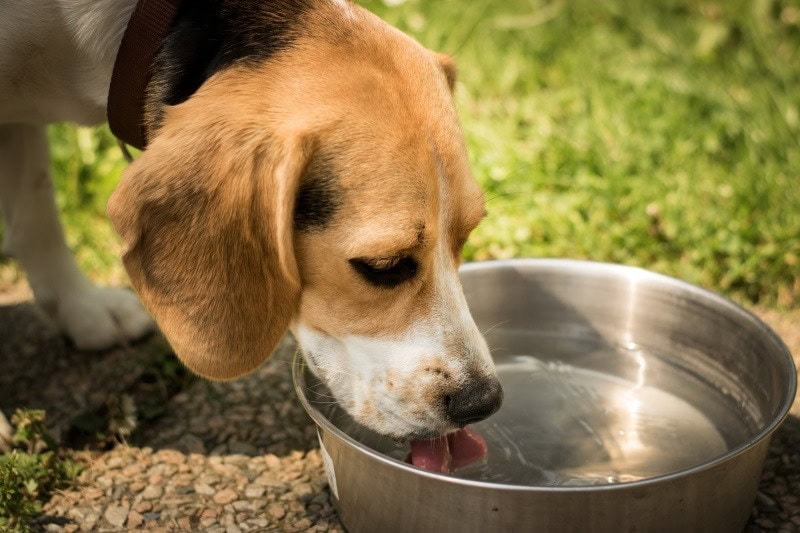
Anything else around the home that has a lot of sodium should be kept out of their reach. Besides that, you want to monitor your dog at the beach. Canines don’t always realize what they are drinking when they are thirsty. It’s important to make sure they are not consuming seawater.
As we talked about above, you also want to check your dog food labels and treat labels for sodium content. Besides the salt content, you should look for wording like AAFCO guidelines, as they determine the dietary needs of our pets.
Finally, make sure there is no impediment to your dog getting clean water. Be sure to fill their bowl with fresh water regularly. If your pet has an outside dog house, make sure the water does not freeze. You also want to check automatic water dispensers often to make sure they are working properly. What’s more, if you are going to be gone for an extended period, leave the toilet seat up—not appetizing to us, but it could save their life!
Conclusion
When it comes to salt, you need to walk a fine line between what your dog needs to survive, and what could potentially make them ill. As a general rule, it is better not to give your pup any salty human foods. Make sure they have access to clean water at all times, and keep all household items that are high in sodium out of reach.
Overall, yes, your dog can have salt. Just not too much! We hope the above information has given you all the answers you need to make a good decision for your pet’s health. Nevertheless, if you have questions or concerns about your canine’s salt intake, you should reach out to your vet. They can provide detailed info about what your particular pet needs to live a strong and healthy life.
See also:



